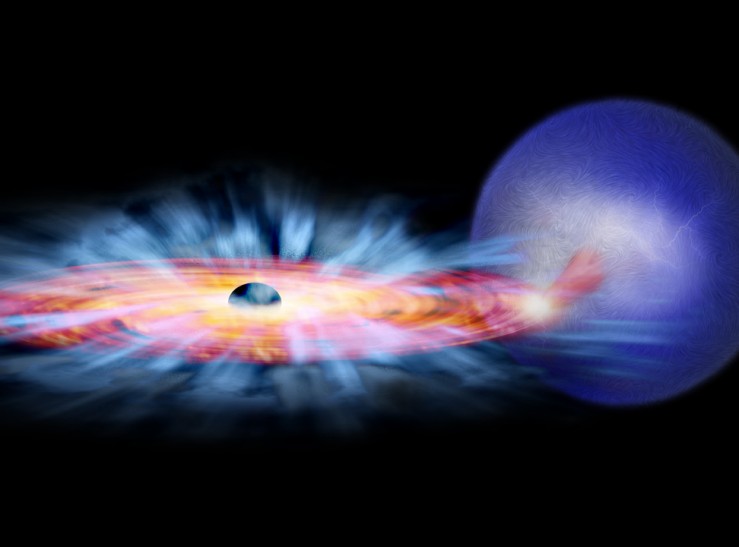
|
Explanation: Binary star system GRO J1655-40 consists of a relatively normal star about twice as massive as the Sun co-orbiting with a black hole of about seven solar masses. This striking artist's vision of the exotic binary system helps visualize matter drawn from the normal star by gravity and swirling toward the black hole. But it also includes a wind of material escaping from the black hole's accretion disk. In fact, astronomers now argue that Chandra Observatory x-ray data indicate a high-speed wind is being driven from this system's disk by magnetic forces. Internal magnetic fields also help drive material in the swirling disk into the black hole itself. If you had x-ray eyes as good as Chandra's, you could find GRO J1655-40 about 11,000 light-years away in the constellation Scorpius.
Shuttle Launch:
News
|
January February March April May June July August September October November December |
| |||||||||||||||||||||||||||||||||||||||||||||||||||||||
NASA Web Site Statements, Warnings, and Disclaimers
NASA Official: Jay Norris. Specific rights apply.
A service of: LHEA at NASA / GSFC
& Michigan Tech. U.
Based on Astronomy Picture
Of the Day
Publications with keywords: GRO j1655-40 - black hole - accretion disk - magnetic field
Publications with words: GRO j1655-40 - black hole - accretion disk - magnetic field
See also:
- APOD: 2025 December 3 B Visualization: Near a Black Hole and Disk
- APOD: 2025 September 24 B GW250114: Rotating Black Holes Collide
- APOD: 2025 May 9 B IXPE Explores a Black Hole Jet
- APOD: 2025 May 6 B The Doubly Warped World of Binary Black Holes
- APOD: 2025 May 4 B Spin up of a Supermassive Black Hole
- APOD: 2024 November 24 B Journey to the Center of the Galaxy
- APOD: 2024 October 1 B Porphyrion: The Longest Known Black Hole Jets
